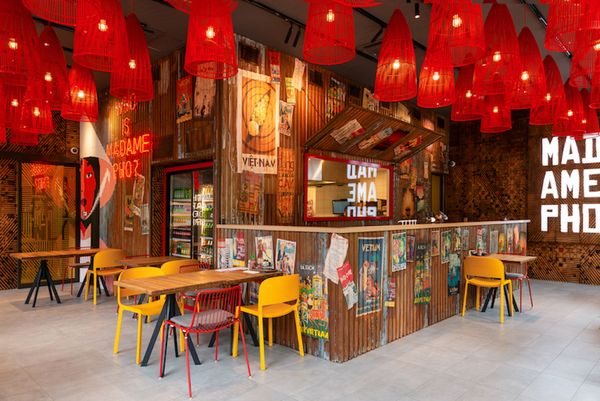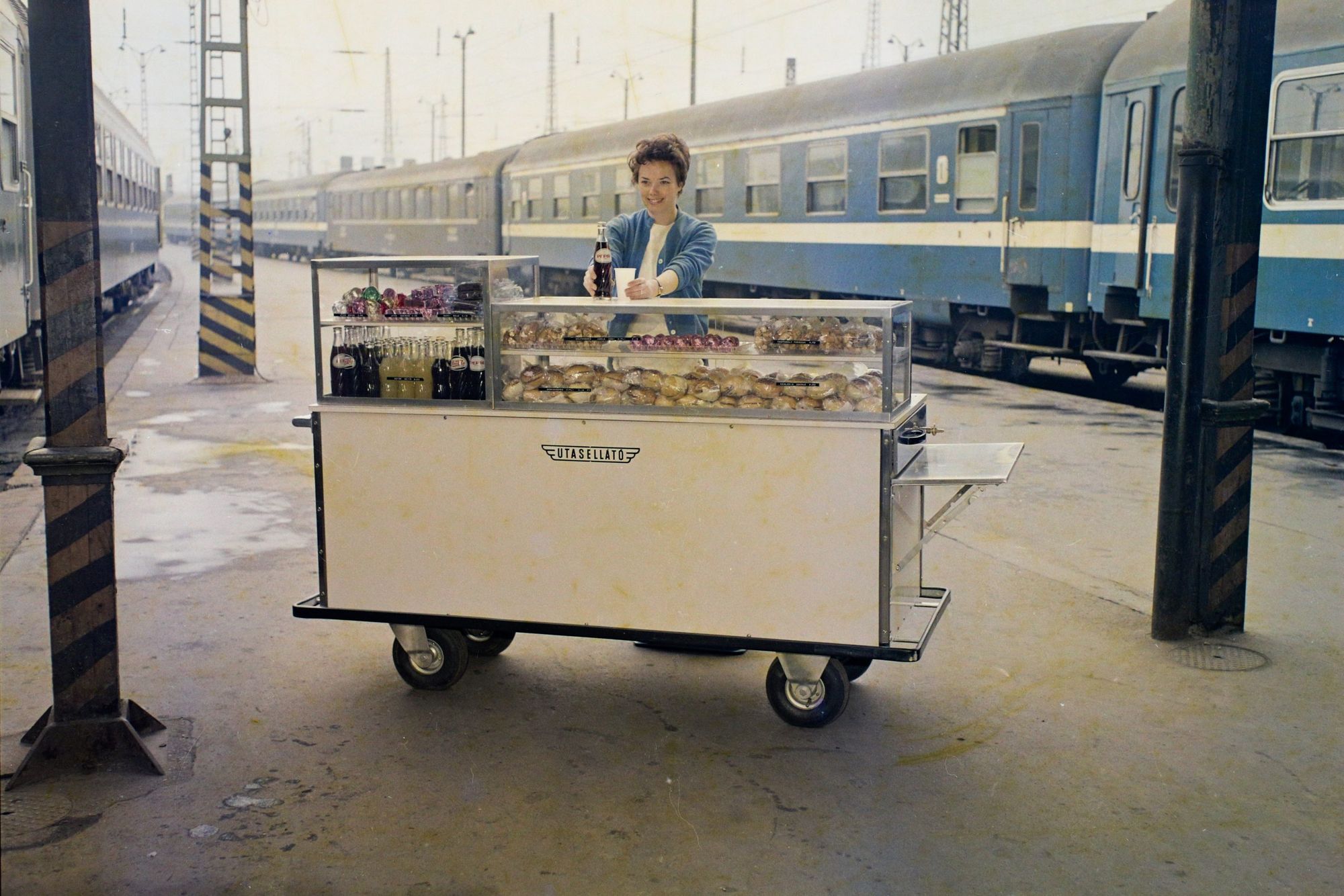Salami sandwich, Bambi in buckled bottles and the ominous chocolate bar “Utasellátó “ wrapped into cellophane. Only a few of the delicacies with which the passengers of the trains on the way to Balaton or Miskolc could satisfy their hunger. Join the nostalgia ride!
Many of us, Hungarians, associate the history of Utasellátó (Passenger Catering Services) with rail transport and thus MÁV (a state-owned Hungarian railway company), and we do so quite logically, yet Utasellátó belonged to the jurisdiction of the Ministry of Domestic Trade. At the same time, it is undisputed that the winged emblem of Utasellátó was “borrowed” from the winged locomotive wheel considered the symbol of railwaymen.
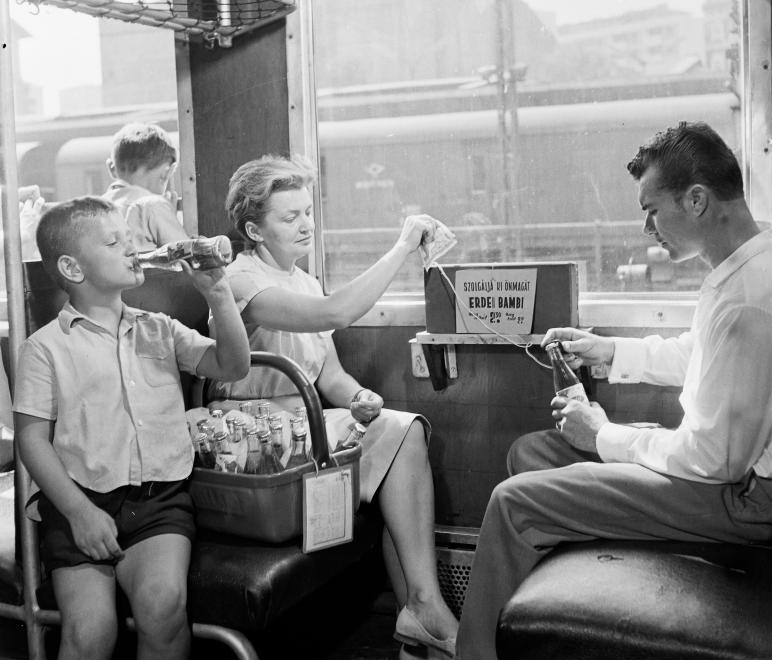
Before the appearance of Utasellátó, the catering of passengers was performed by various foreign companies, and then the torch was passed to MÁV’s Étszolgálat (Dining Services). It was followed by Utasellátó Nemzeti Vállalat (Passenger Catering Services National Corporation), which started its operation on November 24, 1948. The corporation’s tasks included supplying the train dining cars, train station eateries, as well as the diners of the bus and ship stations, and later on they also took on the maintenance of the wildly popular vending machines.
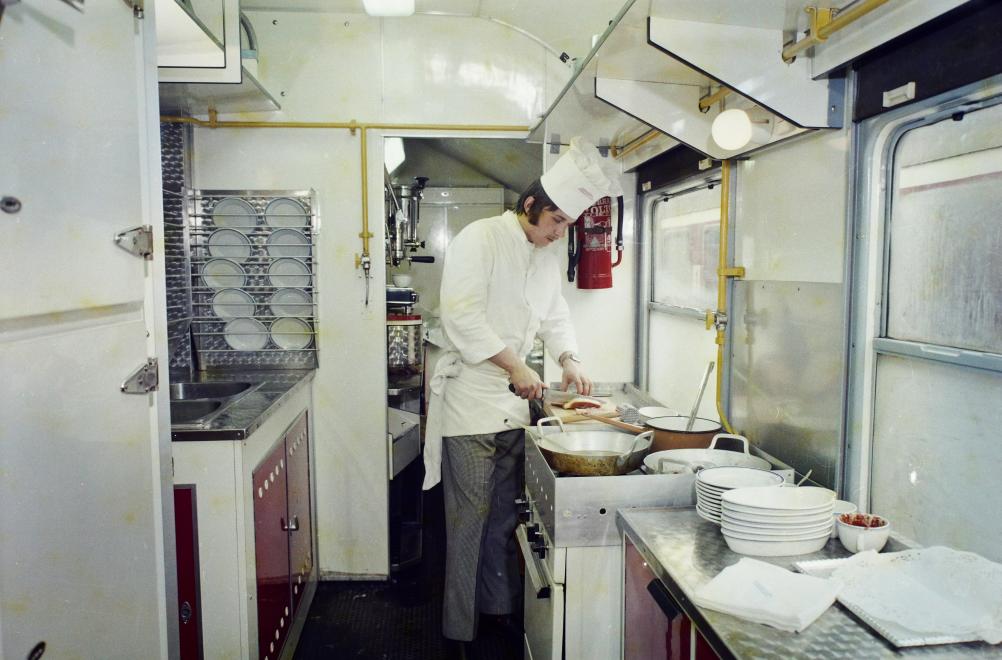
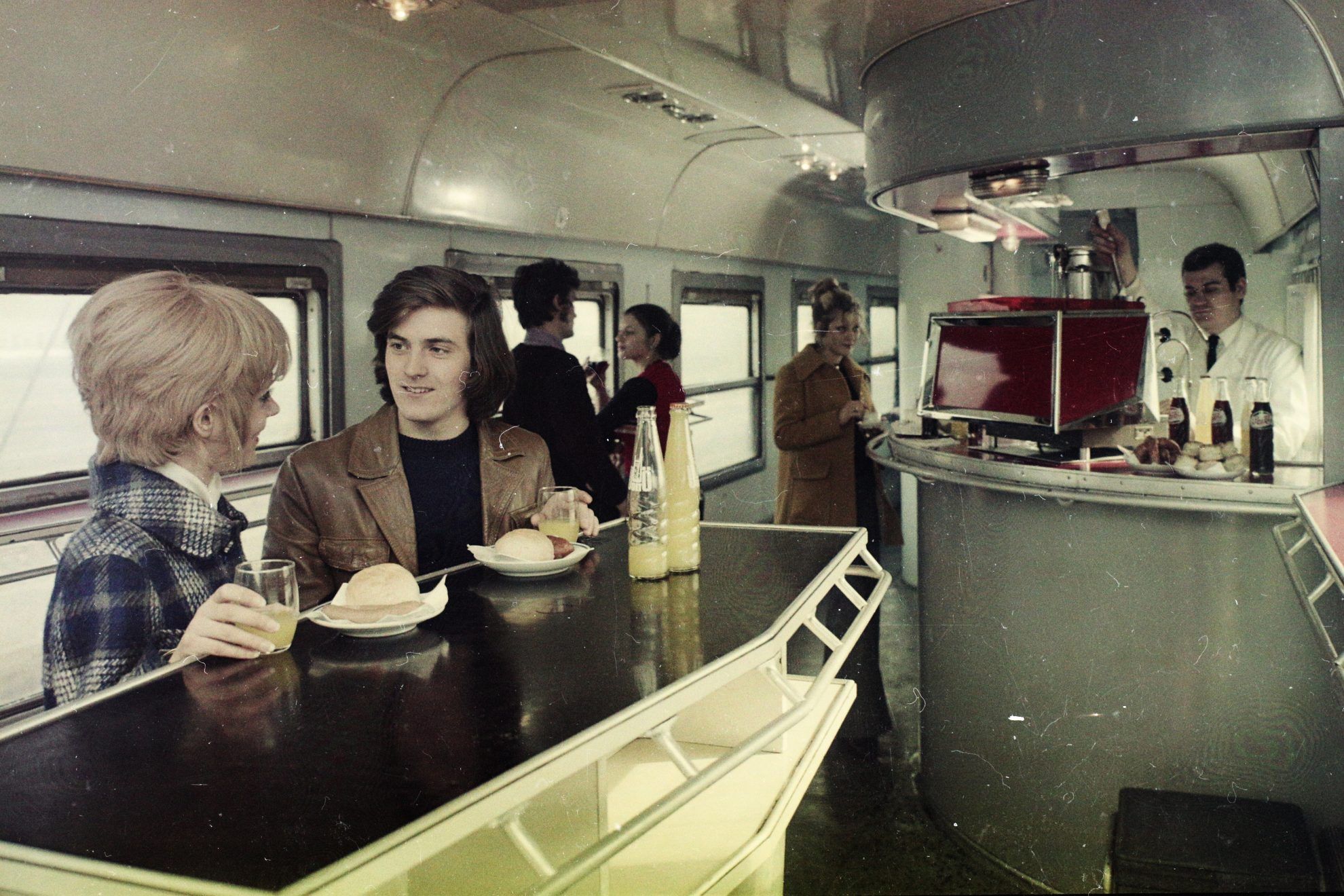
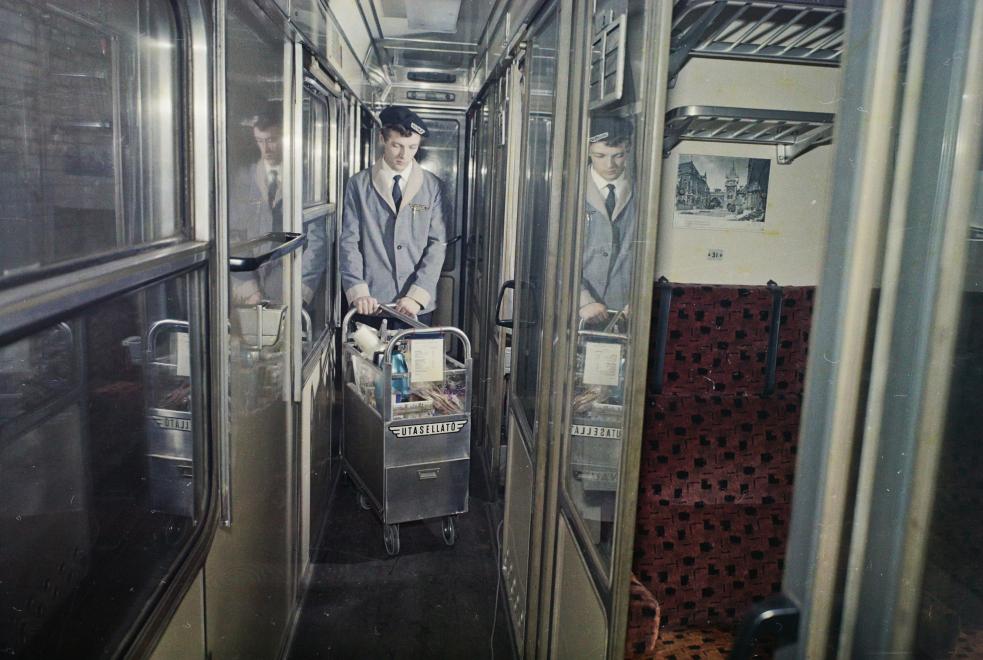
In the beginning, a total of 20 dining cars, 41 “basket” services, 2 catering units and 5 selling points served the comfort of passengers, while in 1974, already 306 station pavilions, 1000 selling points and 479 catering units were run by Utasellátó.[1] A bit later, modern Utasellátó restaurants, buffets and bistros appeared on multiple settlements of Hungary.
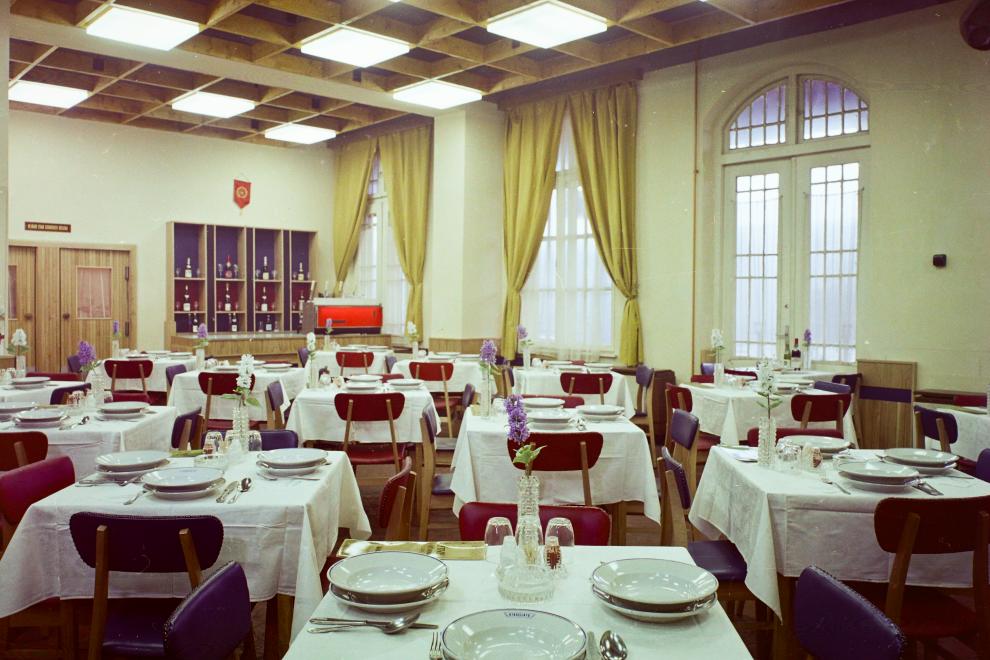
Utasellátó was our own franchise network, which provided a solution (and, many times, annoyances, too) to the Hungarian passengers for decades. For example, in 1968, Judit Cs. Benkő wrote in her article:“…Due to the partial elimination of the gas filling stations of MÁV, the gas supply of the buffet cars has been rhapsodic in the past period (…) guests cannot get either an espresso or a hot wiener.”[2] The writer of the article also mentions the poor condition of the cars and their technical standard, too, as well as the fact that it was not possible to cool dishes at this time at all.
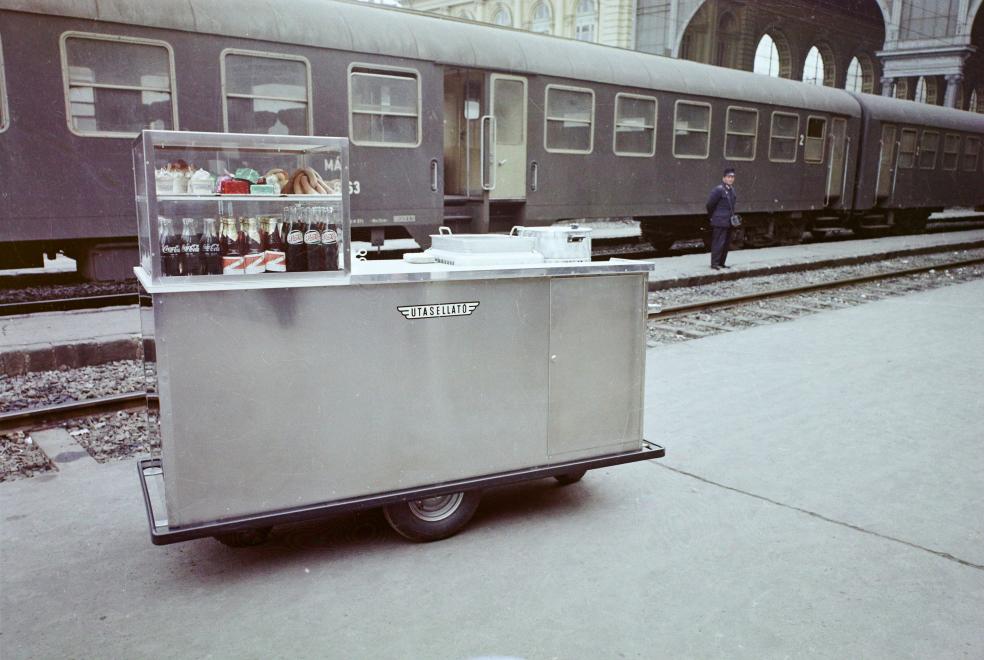
The first alcohol-free buffet eatery of the country was opened in 1972 at Nyugati Railway Station. The non-stop catering unit created based on the initiative of Utasellátó and the MÁV Directorate in Budapest welcomed passengers with modern equipment (walls covered in cast stone, marble flooring), ten different types of hot meals, various cool beverages, delicatessen dishes, sweets and coffee.[3]
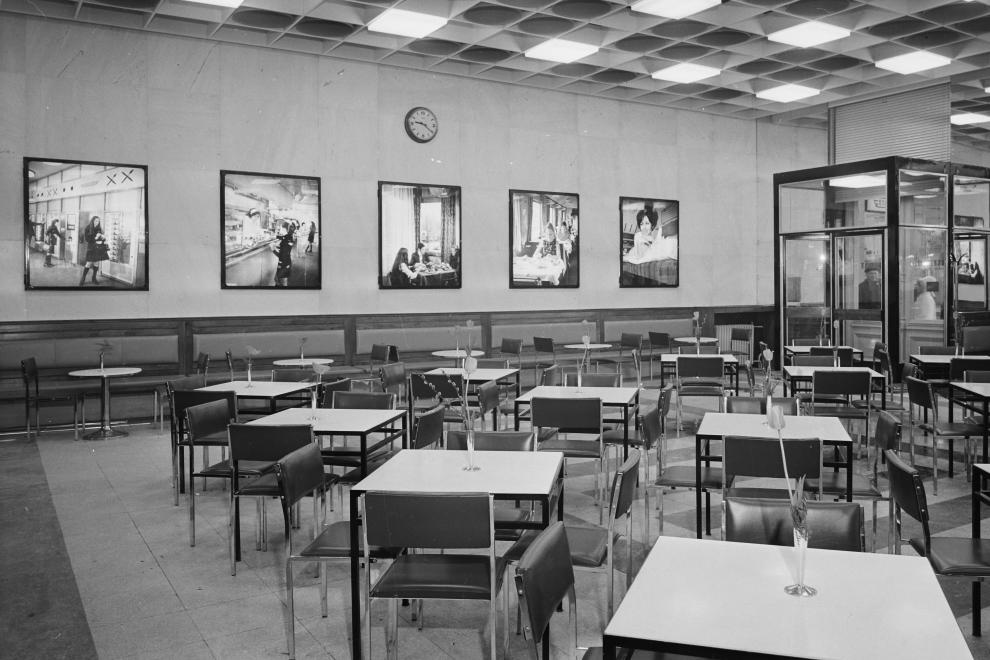
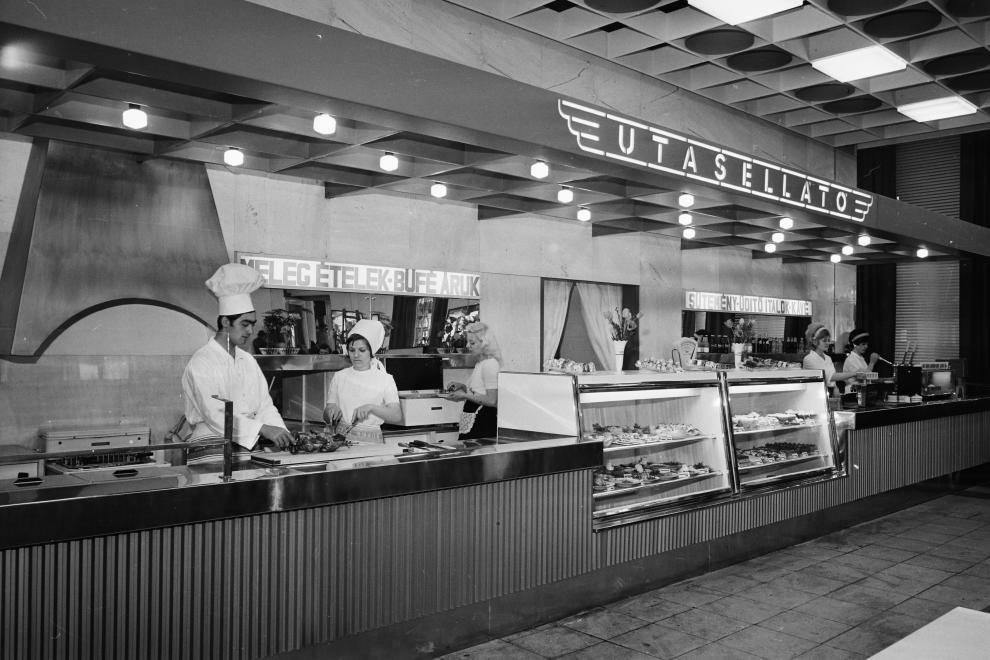
At the end of the sixties, the wildly popular vending machines appeared on the railway stations of the capital and the country, as well as the subways of the Budapest and near metro stations. These offered prepackaged food for the passengers and city dwellers in a hurry and later for those spending their holiday at Lake Balaton, too, for a few Forints.
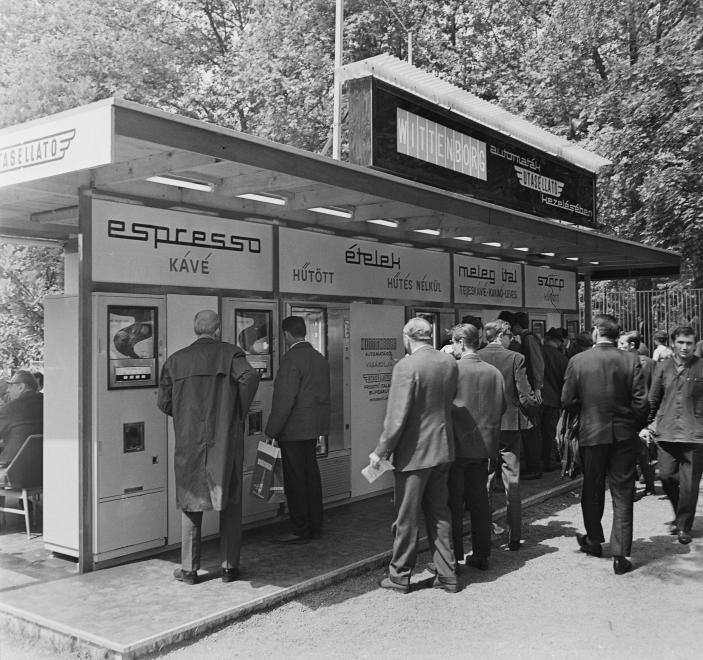
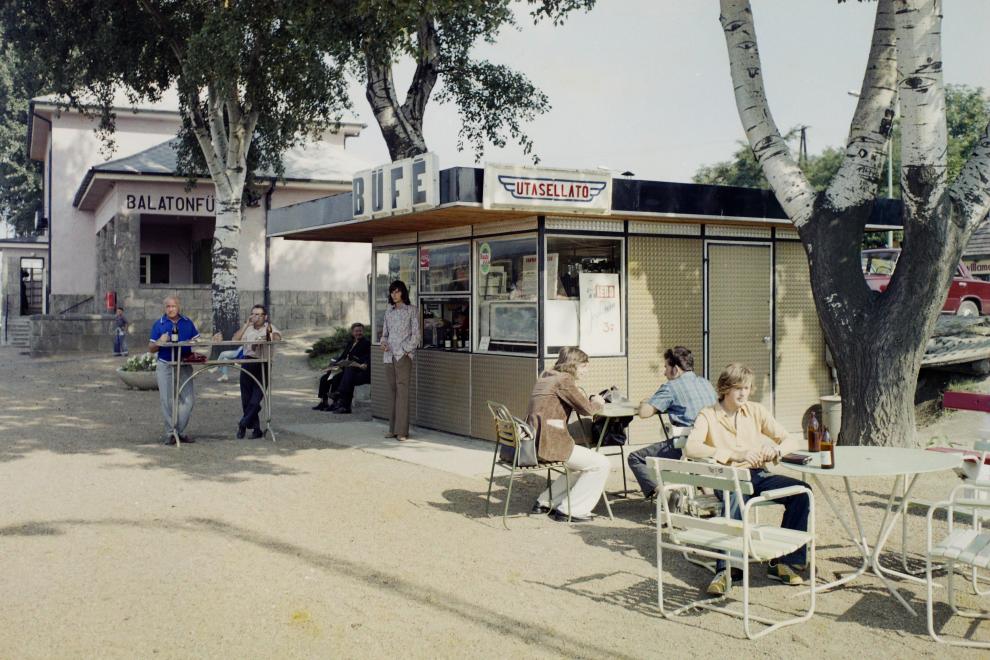
The vending machines promising Western modernization caught the attention of passengers with their expanded repertoire, but they caused a lot of headaches to them at the same time. In 1976, Utasellátó operated 288 of such vending machines: there were some “versions” that performed poorly (such as the machine operating in EMKE subway) but there were some quite popular ones, too.
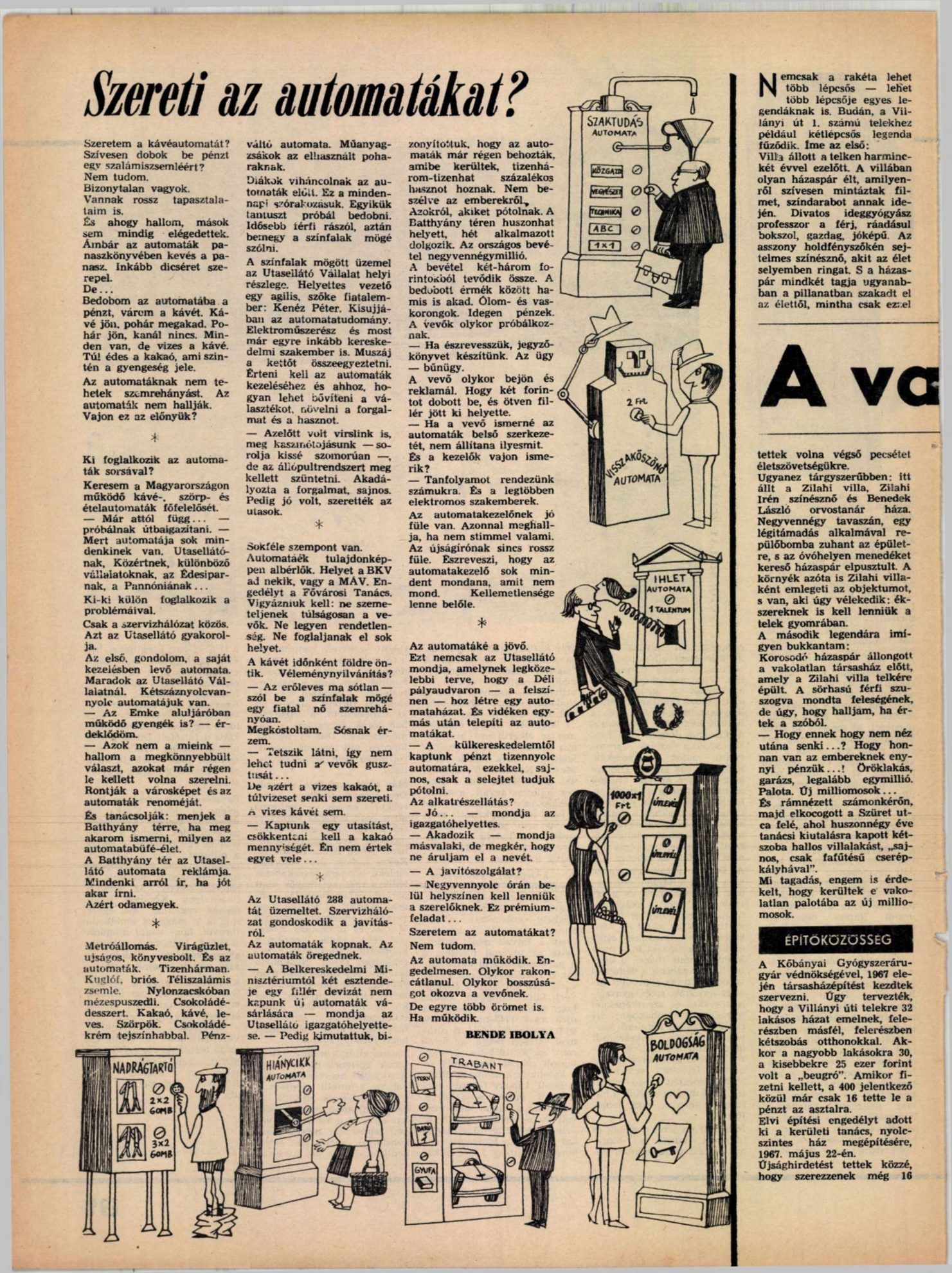
A good example of the latter is the former vending machine operated at Batthyány tér, which offered Bundt cake, brioche, salami sandwiches, “puszedli” (a traditional Hungarian honey cake) packed in plastic bags, chocolate desserts, chocolate milk, coffee and evens soup to passengers. “We also had wieners, and deviled eggs (…), but we had to end the standing counter system. Unfortunately it hindered traffic. But it was quite popular amongst passengers” – told assistant manager Péter Kenéz to the journalist of Tükör.[4]
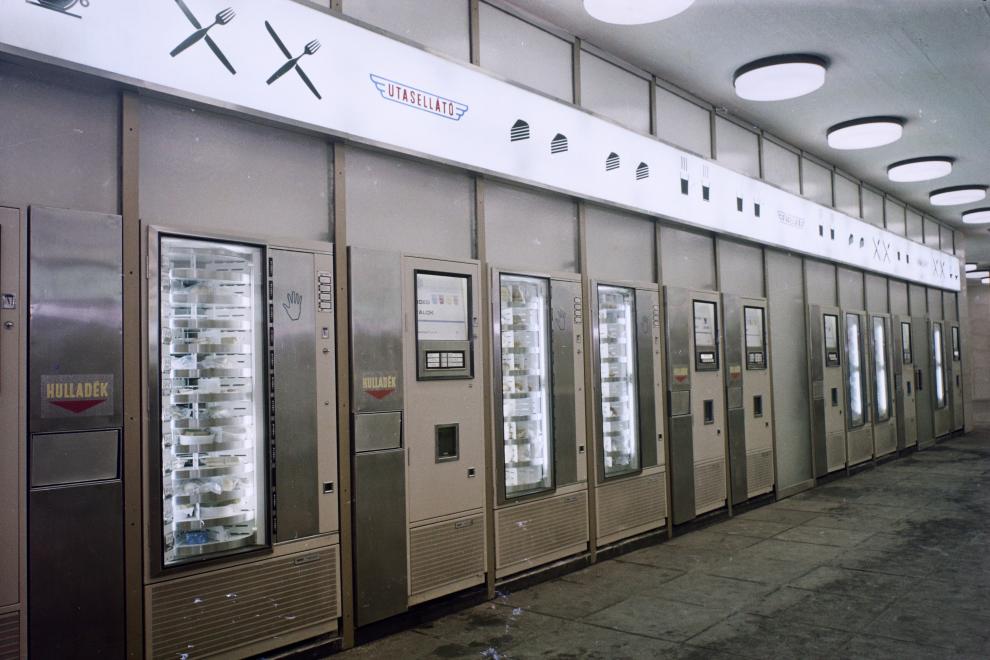

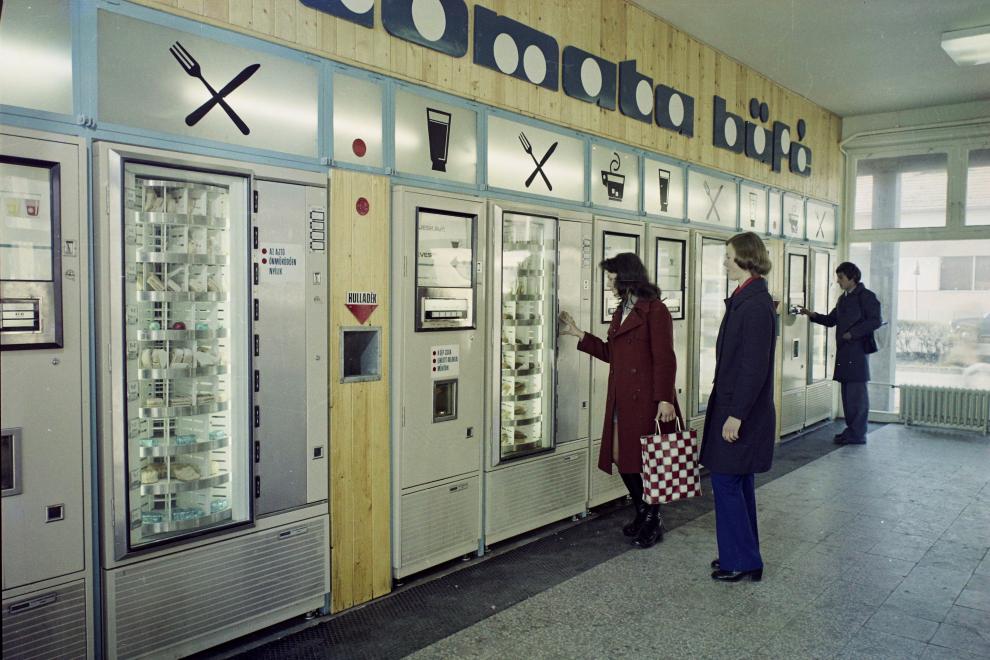
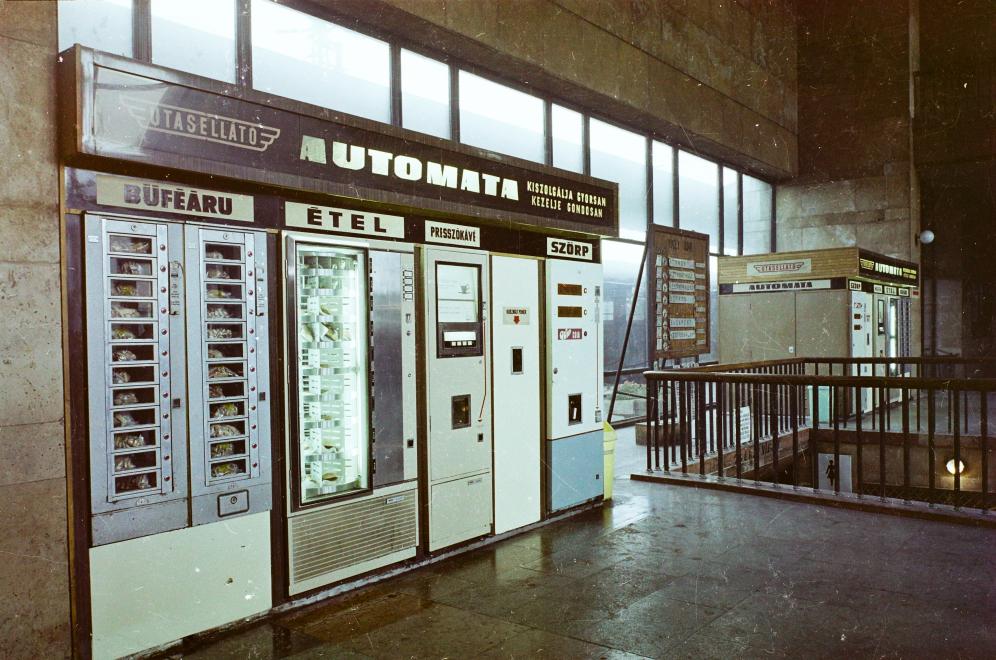
And what were the station eateries, or “restis” in Hungarian, operated by Utasellátó like? These places provided shelter for passengers transferring between lines and even for the locals many times, as many people visited these homey catering units for a tasty stew or some good beer. The columns of the 1969 issue of Tükör gives an insight to the everyday of the resti in Pusztaszabolcs. Kálmán Mészáros, former chief waiter and manager at the time arrived there in 1934, and recalls the good old times as follows: “In the old days, every train would wait 10-15 minutes at our station. The locomotive needed water. For example, the passenger train to Paks waited 50 minutes here. It was obvious that the guests would visit to the eatery. But even the express train to Lake Balaton stopped here for a drink; we would place the cups of espressos and beers next to the railway tracks, the passengers jumped down, grabbed the cups and put the money on the plate. It was our way of self-service at the time.”[5]
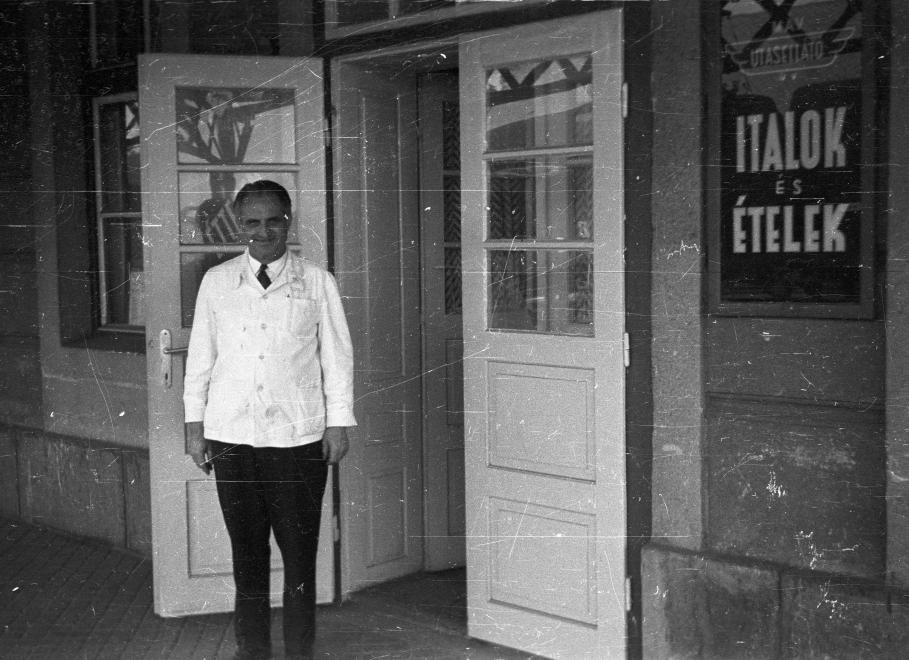
And what did Kálmán Mészáros offer to the guests of the eatery? “We bake strudel every day, and roasted liver, stew, stuffed cabbage. We also attempted to make so-called specialties, too, with French cuisine, but this is a station eatery, this is not why people come here.”
Photos: Fortepan
Cover photo: Budapest, 1971 – Nyugati Railway Station, the cart of Utasellátó (Source: Fortepan / Sándor Bauer)
[1] Pártélet, 1974/4.
[2] Magyarország, 1968/5.
[3] Turista Magazin, 1972/7.
[4] Tükör, 1976/9.
[5] Tükör, 1969/4.
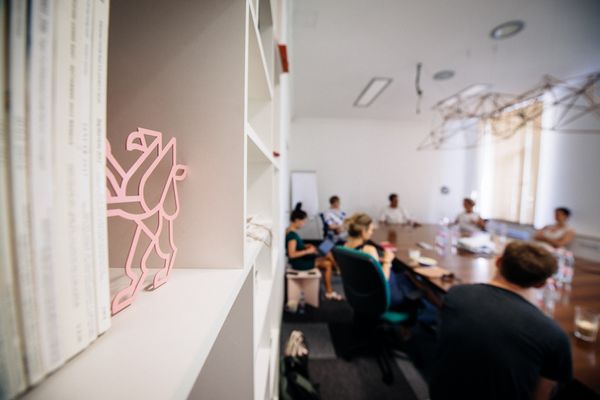
HFDA | The second design START started digitally

Your practical companion in hydration: the world’s first Origami bottle
